Food Label Nutrition
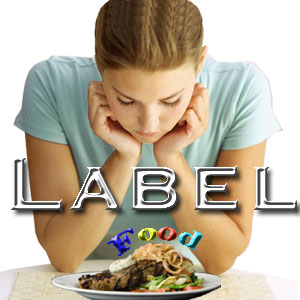
Pause for a minute and quickly evaluate the amount of time you spend in shopping for clothing and accessories vis-à-vis. the time you take to read a food label. Unfortunately, most of us spend hours on shopping for the most attractive dress outfit and a suitable accessory and not as much in reading a food label completely. The significance of reading food label receives scant attention, most of the time.
Every educated consumer who cares to enjoy good health should know how to decipher food labels. Probably, most of the time you refer the food label in order to know the ‘best before date', checking for a particular ingredient you are allergic or to check the ‘fat' content. But, there is a lot more to it.
Other nutritional information printed on the food label facilitate in determining whether the food is suitable for you and your entire family. Without reading the food label, how can you check the validity of claims made by food manufacturers? This article is a guide to food label reading. Get ready to make informed food decisions each and every time you visit the supermarket by understanding food label nutrition.
Food label
Until 1994, food manufacturers had to just print their product's nutritional data anywhere on the cover of the product. And the manufacturers neatly abided by formally printing the information anywhere they wanted to, mostly in very small print size. The Food and Drug Administration took notice of the vague and haphazard manner and decided to standardize the whole system. It was in 1994 that food labels were regulated in an organized method. The modifications recommended by FDA in 1994 effectively meant no more jargons or misleading usage of terms in food labels. The FDA listed out uniform definitions for terms and a structured format in which information should be presented. All new food labels had to comply with the FDA regulations.
Effectively, the title ‘nutrition facts' appear on top and should include both the ingredients and nutritional information of the food in a particular size and shape (rectangle). The nutritional information should be listed in a particular order denoting its importance. These amendments are incorporated in today's food labels and benefit the consumer in making healthier food choices.
- The nutrition information for most packaged food is available (mandatory). For raw foods nutrition labeling is purely voluntary.
- The nutrition facts are presented in an easy-to-understand standardized format (variety of formats depending on package size and nutrient content) that makes comparison of similar products of different food manufacturers easier.
- There are clear definitions of terms such as ‘light, low-fat, and higher-fiber'.
- All related information pertaining to amount of saturated fat, cholesterol, dietary fiber, proteins, vitamins and other nutrients per serving is furnished.
- The nutrient reference values are expressed as % of daily values. Consumers can determine if the food fits into an overall daily diet category.
- The claims linking the intake of a nutrient to combat a disease may appear. For example, how a particular food with enough calcium can lower risk of osteoporosis. These claims help consumers to sort and select food with desired nutritional qualities.
- A look at the list of ingredients (mandatory for all foods with more than one ingredient) helps the consumer to decide whether he/she should abstain consuming for reasons such as health, allergens etc. The ingredients usually follow a descending order with reference to weight.
Certain foods are exempted from labeling. This includes food packaged and sold in very small quantity, ready-to-eat foods prepared on site but not meant for immediate consumption (like bakery products), food prepared and served for immediate consumption in hospitals cafeterias or airplanes, medical foods to meet the specific needs of patients diagnosed with certain diseases, plain coffee and tea.
Food label reading
The principal display panel (PDP) and the information panel are two separate panels of today's food label.
PDP: Is in the front of the packet. As per FDA guidelines, the name of the product and the net quantity of the contents of the packet appear here.
Information Panel: Is to the immediate right of the PDP. As per FDA guidelines, nutrition information, list of ingredients, name and address of the food manufacturer, the packer or distributor should all appear in PDP. In case of lack of space in the information panel, the PDP space can accommodate such information.
Importance of food label reading
Reading food labels play a vital role in maintaining good health. Most consumers tend to glance at food labels just to compare prices of similar food. For some, the attraction is pretty labels and fancy advertising. These cannot decide food choice. Consumers who wish to safeguard health understand the role of healthy diet. And, a healthy diet choice is possible only when you read the food label and decipher its nutritional content. Both the panels of food label are equally important. A standard nutrition label contains the following heading and related information:
- Serving Size
- Servings per container or package
- Calories
- Calories from fat
- Total fat
- Percent daily value
- Sodium
- Total Carbohydrate
- Protein
- Vitamins and minerals
- Calories per gram
- Claims
Food label nutrition
Serving size: Is the first heading right below the nutrition facts title. Food products belonging to a particular category have similar serving sizes. Cups, spoons, slices or grams represent the amount an average person eats at one helping. The nutrition information provided corresponds to the serving size listed on the label. For example, if the serving size is 1 cup and you eat 2 cups, then double the calories, fat, etc. that you have eaten.
Serving per container or package: Appears right below serving size and provides information regarding how many servings the package contains.
Calories: This suggests the number of calories per serving. A serving that provides for 20 calories or less is termed as free food.
Calories from fat: From this you can understand how many calories per serving are from fat. Take this into account and the ‘total fat' line which appears right below to evaluate if the food ought to consumed or not. If the food is high on calories from fat, you may want to eat it sparingly or totally avoid consumption.
Total fat: The label lists total fat, saturated fat, cholesterol and sodium. Take a look at the total grams of fat per serving. If it accounts for 3 grams or less per serving, then the food is considered as low fat food.
Percent Daily Value: This helps in understanding how one serving of food contributes nutritionally (fats, carbohydrates, proteins, major vitamins, and minerals) to a 2000 calorie/day diet. Some food labels list percentage daily values for both 2,000 and 2,500 calorie/day diets. The percent is for each nutrient that a serving of that food can provide. Percent daily value is a mere reference that provides some perspective on what their overall daily dietary needs ought to be.
Average women (non-pregnant or no-lactating) require 2,000 calories per day.
Average man requires 2,500 to 2,800 calories per day.
You can use this and evaluate if a food has little or a lot of energy producing nutrients. Anything less than 5% is low. If one serving of a food product provides 10 to 19% of the Daily Value, the product can be considered a good source of a particular nutrient. If it contains 20% or above, then the food is considered high in a particular nutrient.
Sodium: Dietary guidelines recommend sodium intake of 2400-3000 mg per day for normal adults. For those who have high blood pressure, it is advisable to consume slightly less.
Carbohydrates: Dietary fibre, sugar and other carbohydrates all add up to give the number of grams per serving. Compare total carbohydrates with sugar. If the difference is appreciable, it means the food contains healthy carbohydrates.
Protein: The average protein requirement for a normal individual would be between 50 and 75 grams per day. Therefore, if a serving contains three grams of protein, by consuming one serving you get around 4-6% of protein.
Vitamins and minerals: The information represents recommended daily allowance for vitamins A and C, calcium and iron per serving.
Calories per gram: Represents how many calories are in 1 gram of fat, carbohydrate and protein.
Claims: Claims such as ‘low cholesterol' or ‘low fat' should strictly meet governmental definitions. FDA requires food makers to provide scientific evidence to prove these claims. Always carefully read the claims, understand and cross check ingredients to check the validity of claims. Do not buy foods that have mis-leading or vague information.
Top of the Page: Food Label Nutrition
Tags:#label #food label reading #food label read #food label nutrition
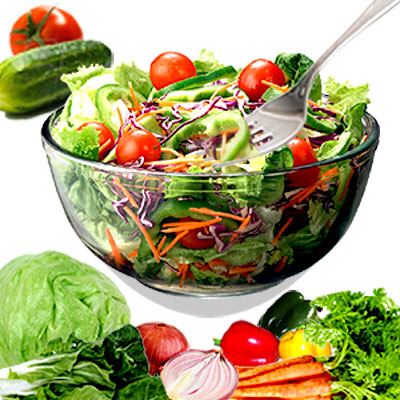 Food and Nutrition Facts
Food and Nutrition Facts Chamomile
Parsnip Soup
Dim Sum
Gazpacho Soup
Whole Grain Cereal
Jicama Nutrition
Bok Choy Stir Fry
Chia Seeds Benefits
Teff Nutrition
Kaniwa
Flax Seed
Wheatgrass Benefits
Kelp Benefits
Types of Chili Peppers
Medicinal Benefits of Pomegranate
Arugula Leaves
Maca Root
Pitaya Fruit
Benefits of Celery
Leek
Asparagus Benefits
Oyster Stew
Oyster Mushroom
Lupin Beans
Quinoa
Freekeh
Extra Virgin Olive Oil
Dill Pickle
Sauerkraut
Fat Burning Foods
Nutrition Chart
Food Combining
Calorie Counter
calories ...
Non Alcoholic Beverage
Punch Recipes
Food Label Nutrition
Homemade Sausages
Cooking Steak
Eating on a Budget
Budget Friendly Recipes
Quick Recipes
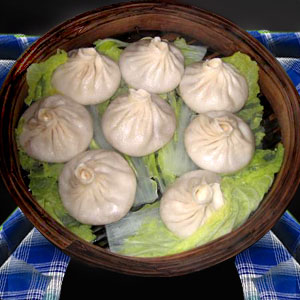 Healthy Packed Lunch
Healthy Packed Lunch Overnight Oats Recipes
Eggplant Casserole
Brunch Recipes
Burrito Recipes
Muffin Recipes
Cupcake Frosting
Apple Crisp
Stir Fry Cooking
Seafood Salad Recipe
Cooking Corn on the Cob
Finger Food Recipe
Sandwich Recipe
Bread Stuffing Recipes
Easy Chili Recipes
Picnic Recipes
Edible Mushroom Recipes
Mushroom Soup Recipes
Dip Recipe
Tapas Recipe
Corned Beef Recipe
Canned Salmon Recipe
Tilapia Recipes
Crumb Cake
Flourless Chocolate Cake
Regional Food
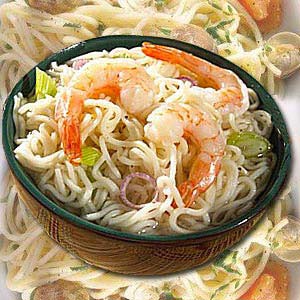 Lasagna Recipe
Lasagna Recipe Peruvian Ceviche
Chinese Food Recipe
Vietnamese Food Recipe
Malaysian Food
Korean Food Recipe
Indian Curry Recipe
Edible Rice Paper
Mexican Food Recipe
Quesadilla
Guacamole Dip
Italian Food Recipe
Spanish Food Recipe
Kosher Food
Falafel Recipe
Tandoori Chicken
Noodles
Canape
Couscous
Meatloaf
Chowder
Gumbo Recipe
Crockpot Recipes
Moroccan Food
Healthy Food
Pre Workout Snack
Matcha Tea
Simple food Swaps to Lose Weight
Foods to Beat Stress
Foods to beat Insomnia
Bone Density Foods
Prebiotic Foods
Kefir Grains
Agave Nectar
Spicy Trail Mix
Pesto Sauce
Homemade Hummus
Crab Cake Sauce
Bamboo Shoots Nutrition
Lemon Grass Plant
Butter Beans Recipes
Loose Green Tea
Seaweed Nutrition
Healthy Food
Low Fat Granola Bar
Steel Cut Oatmeal
Fruit Pizza
Pizza Toppings
Green Smoothie
Healthy Meal Planning
Delicious Mealtime Recipes
Heart Healthy Fats
Healthy Heart Recipe
Healthy Dinner Recipe
Healthy Dessert Recipe
Healthy Fast Food
Healthy Kid Recipe
Probiotic Food
Diabetic Friendly Foods
Fruit Salad Recipe
Bread Pudding
Tofu Recipe
Oat Bran
Broccoli Salad
Avocado Recipe
Iron Rich Food
Brain Foods
Antioxidant Food
Natural Diuretic
Low Fat Cooking Tips
Rice Pilaf Recipe
Low fat Chicken Recipe
Food Tips
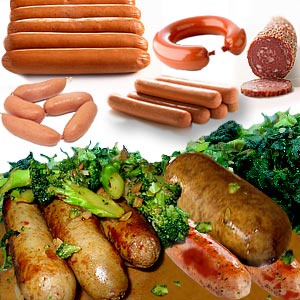
Sous Vide Cooking Technique
Natural Sugar Substitute
Stevia Sugar Substitute
Sunflower Seeds Nutrition
Bouquet Garni
Cake Decorating Tips
High Satiety Foods
Thanksgiving Dinner
Safe Food Storage
Frozen Food Storage Tips
Cold Storage Food Tips
Leftover Recipe
Food Pyramid
Dairy Free Food
Microwave Cooking
Food Intolerance
Homemade Ice Cream
Apple Cider Vinegar
Benefits of Honey
Beverage Cooler
Food Poisoning Symptom
Food Allergy Symptom
Food Addiction
Top of the Page: Food Label Nutrition
Popularity Index: 101,126

